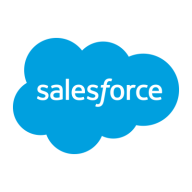

MuleSoft Anypoint Platform and Tidal by Redwood compete in the integration and automation sector. MuleSoft leads with its extensive integration capabilities, while Tidal stands out in workload automation.
Features: MuleSoft Anypoint Platform offers a comprehensive integration platform with robust API management, extensive connectors, and a contract-first API development approach. It supports seamless connectivity for organizations. Tidal by Redwood is tailored for workload automation, excelling in complex scheduling needs, cross-platform workloads, and flexible scheduling options.
Room for Improvement: MuleSoft Anypoint Platform could improve runtime management, enhance technical support, and address high pricing for small to medium businesses. Monitoring and user accessibility are other areas for enhancement. Tidal could improve by enhancing reporting capabilities, simplifying its user interface, and providing better integration with other tools. Better training materials could also help new users.
Ease of Deployment and Customer Service: MuleSoft Anypoint Platform offers flexible deployment, supporting public, private, hybrid, and on-premises cloud options, but faces some customer support responsiveness issues. Tidal by Redwood primarily supports on-premises and some hybrid deployments, with customer service praised for its responsiveness and eagerness to assist.
Pricing and ROI: MuleSoft Anypoint Platform tends to be expensive with a complex licensing model, offering substantial ROI for large organizations. Smaller enterprises might find the cost prohibitive. Tidal by Redwood offers more budget-friendly and straightforward pricing, providing predictable costs that allow for easier financial planning, ensuring flexibility through enterprise agreements.
| Product | Market Share (%) |
|---|---|
| MuleSoft Anypoint Platform | 6.3% |
| Tidal by Redwood | 4.7% |
| Other | 89.0% |


| Company Size | Count |
|---|---|
| Small Business | 21 |
| Midsize Enterprise | 12 |
| Large Enterprise | 29 |
| Company Size | Count |
|---|---|
| Small Business | 3 |
| Midsize Enterprise | 6 |
| Large Enterprise | 38 |
MuleSoft Anypoint Platform provides API management and integration capabilities with scalability, ensuring seamless connectivity across systems.
MuleSoft Anypoint Platform offers API management and integration capabilities within a user-friendly interface. With a range of connectors and the ability to handle integration patterns, it enables data integration across environments with support for API-led connectivity. High scalability, observability, batch processing, and tooling are key features, enhancing performance while simplifying deployment.
What are the standout features of MuleSoft Anypoint Platform?MuleSoft Anypoint Platform is employed by organizations for API management and seamless integration across systems in industries like retail and e-commerce. It connects enterprise applications in environments such as SAP and Salesforce. Users leverage it for data transformation and synchronization, achieving efficient real-time processing and a middleware layer across systems.
Tidal Software is a leading provider of enterprise workload automation solutions that orchestrate the execution of complex workflows across systems, applications and IT environments. With a comprehensive portfolio of products and services, Tidal optimizes mission-critical business processes, increases IT cost efficiencies and satisfies legal and regulatory compliance requirements. Hundreds of customers around the world count on Tidal for modernizing their workload automation and driving their digital transformation. Tidal Software is headquartered in Chicago with offices in Houston, London, Minsk, Belarus and Chennai, India. For more information, visit tidalsoftware.com.
We monitor all Workload Automation reviews to prevent fraudulent reviews and keep review quality high. We do not post reviews by company employees or direct competitors. We validate each review for authenticity via cross-reference with LinkedIn, and personal follow-up with the reviewer when necessary.